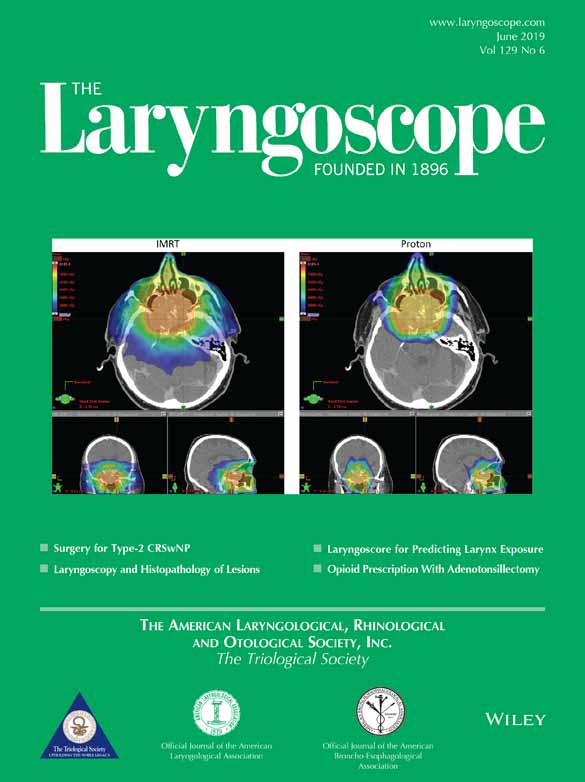The glottis is not round: Teardrop-shaped glottic dilation for early posterior glottic stenosis
Presented at the 139th Annual Meeting of the American Laryngological Association, Harbor Springs, Maryland, U.S.A., April 20, 2018.
The authors have no funding, financial relationships, or conflicts of interest to disclose.
Abstract
Objectives
Posterior glottic stenosis (PGS) results in severe derangement of laryngeal configuration and function with significant morbidity as a sequalae. Presently, there is no treatment for patients with “early” PGS. Dilation is often used for stenotic disease, but present dilation methods are limited to a round shape and the glottis is a sector (teardrop-shaped). Round dilation of the larynx results in compression of the membranous vocal folds (with potential for injury) and minimal expansion of the posterior larynx. We present a novel laryngeal dilation method that matches the unique anatomic shape of the glottis: teardrop-shaped glottis dilation (TSGD).
Methods
We present a clinical series of early PGS patients treated with a TSGD. Five patients with dyspnea and significantly reduced vocal fold mobility due to early PGS were treated with TSGD, which involves placement of a triangular static stent in the anterior glottis, with simultaneous use of a round balloon dilator in the posterior glottis.
Results
All patients reported improved ease of breathing and decrease in Dyspnea Index score and were decannualated following treatment. Video perceptual analysis of pre-/postlaryngoscopy examinations was performed with five blinded reviewers, and all patients were scored to have improved posterior glottic airway space following treatment with a mean improvement of 2.4 on a 11-point scale.
Conclusion
These clinical results demonstrate that there is enormous potential for the identification and treatment of patients with early PGS and use of a laryngeal dilation technique that matches the anatomic configuration of the glottis.
Level of Evidence
4
Laryngoscope, 129:1428–1432, 2019




